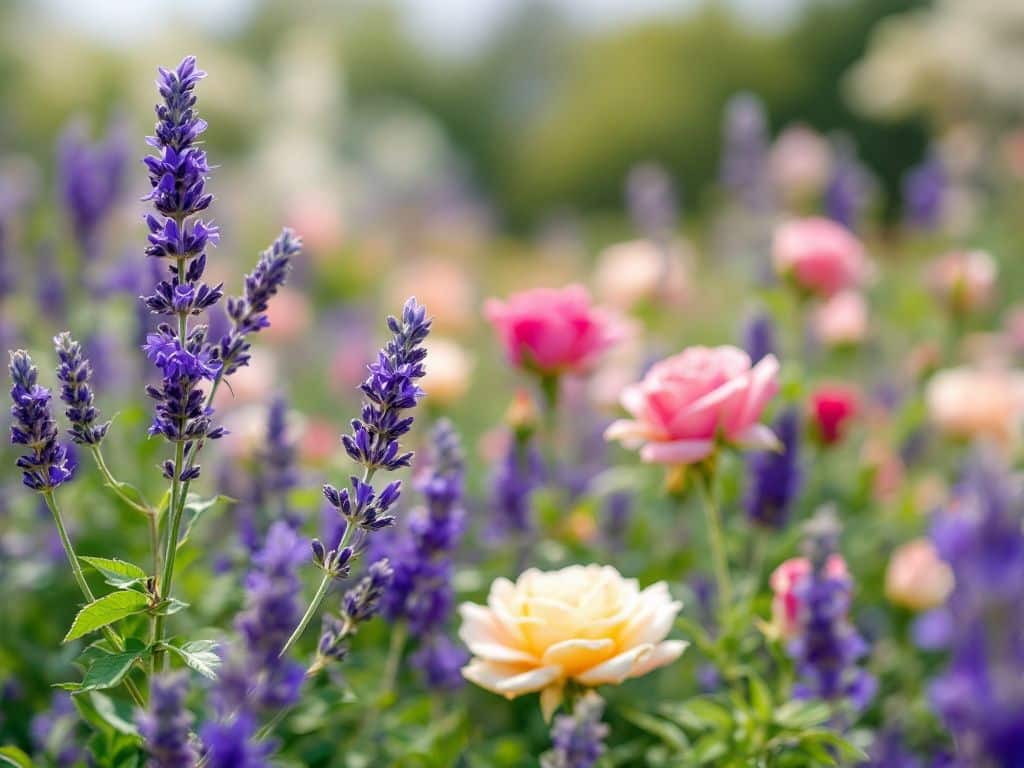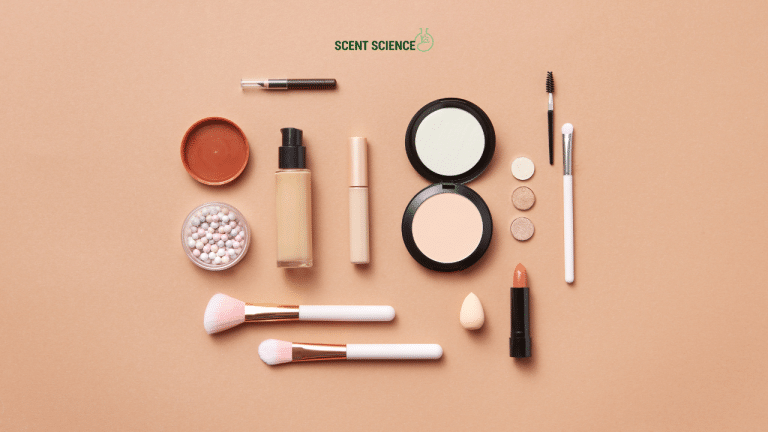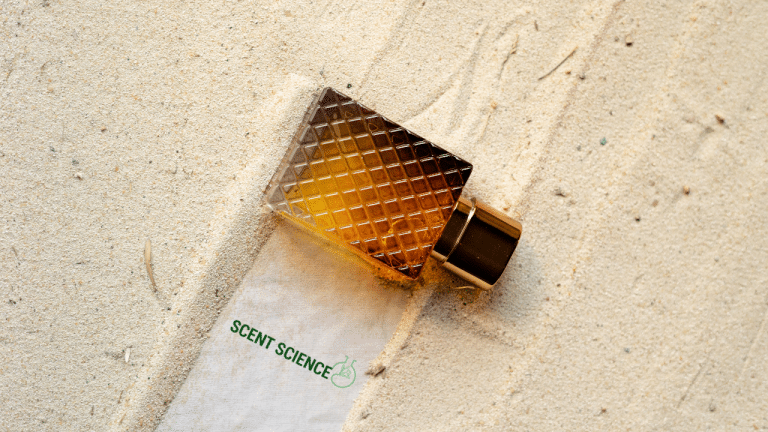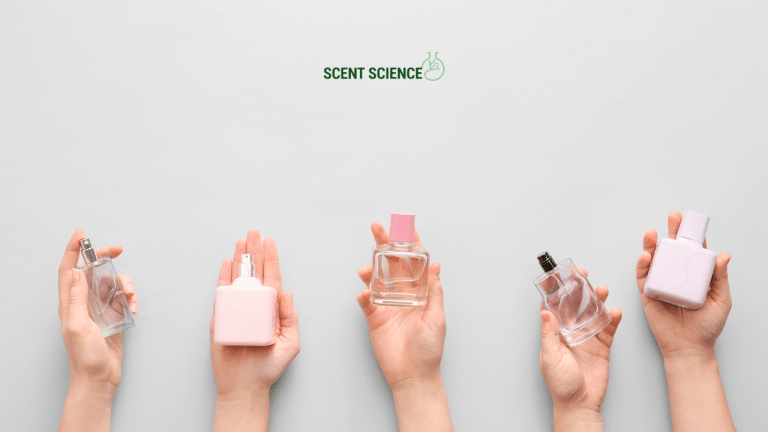In an era where consumers are more conscious of health and sustainability, the allure of natural fragrances has taken center stage. Driven by the botanical riches offered by plants, natural fragrance ingredients present a tapestry of olfactory experiences crafted by nature. Surpassing the limitations of synthetic scents, these botanical fragrances not only provide an array of sensory delights but also promise the added benefits of botanical extracts and essential oils. This guide explores the science and artistry behind natural scents, drawing from rigorous research and industry insights to illuminate how the age-old tradition of extracting fragrance from plants finds relevance in today’s world.
Table of Contents
ToggleThe Art and Chemistry of Natural Fragrances 🌸
Biology Meets Chemistry: The Source of Scent
The compelling aromas found in plants are primarily due to the biochemical complexity held within their tissues. Chemicals such as terpenes, esters, phenols, and alcohols serve dual purposes as both fragrant compounds and as part of a plant’s defense mechanism. Let’s delve into the key compounds responsible for these natural, aromatic creations:
- Terpenes: Predominant in essential oils, terpenes like limonene and pinene contribute distinct notes, such as the citrus zing of orange and the resinous quality of pine. These compounds aid in plant protection against herbivores and parasites, as well as signal pollinators.
- Esters: Known for their sweet and fruity aromas, esters lend the delicate scent to florals like roses and lotuses. They arise from the reaction between acids and alcohols within the plant.
- Alcohols: Not all alcohols hold the pungent aroma of everfrosting spirits; geraniol and menthol, for instance, supply the fresh notes found in geranium and peppermint, respectively.
These compounds are often concentrated in specific parts of a plant, such as leaves, flowers, seeds, bark, or roots, each representing its signature fragrance profile. The diversity of these chemicals and their combinations form the foundation of botanical scent artistry, echoing a plant’s origin, environment, and evolutionary strategies.
Essential Oils as Fragrance Powerhouses

Essential oils are distilled or extracted liquid compounds that capture the concentrated essence of the plant’s fragrance profile. With the market growing significantly—valued at $8 billion in 2021, according to a report by Grand View Research—the appeal of essential oils in natural perfumery cannot be understated.
- Steam Distillation: The gold standard in essential oil extraction, steam distillation involves passing steam through plant material to vaporize volatile compounds, which are then condensed and collected. This method is particularly effective for high-boiling-point compounds.
- Cold Pressing: Used predominantly for citrus peels, this technique involves mechanically pressing the plant’s rinds to release oils. Cold pressing retains the integrity of the compounds, providing oils that are fresh and tend to have high commercial value.
- Solvent Extraction: For delicate flowers like jasmine, where steam distillation could alter key reactants or deplete the aroma, solvent extraction employs non-water soluble solvents that dissolve essential oils, later separating them through evaporation.
The Complexity of Botanical Extracts
Botanical extracts broaden the scope of synergy. Unlike s beyond essential oils by exploring entire plant compounds’ synergy. Unlike essential oils, extracts may encompass non-volatile compounds that might not be traditionally aromatic but contribute to a fragrance’s persistence or enhance therapeutic properties.
A notable method is the **CO2 Extraction**. This clean, solvent-free approach utilizes carbon dioxide under high pressure to dissolve plant materials, offering a full-bodied aroma devoid of contamination. The precision and safety make CO2 extracts highly desirable in both the fragrance and food industries.
Industry Practices and Standards: A Closer Look
Regulation and Relevance: Upholding Quality Standards
The world of natural scents, grounded in botanical extracts and essential oils, remains tightly regulated to ensure safety and authenticity. Organizations such as the International Fragrance Association (IFRA) set forth guidelines to steer practitioners towards safer substance use, mitigating instances of toxic exposure or skin sensitization.

- ISO Standards: Essential to quality control, International Organization for Standardization (ISO) provides a repertoire of standards relevant to essential oils and fragrances, such as ISO 9235, which classifies natural aromatic raw materials.
- Organic Certification: Concurrently, certification bodies like USDA Organic and EcoCert verify that products adhere to organic agricultural guidelines, ensuring minimal synthetic intervention from growth to extraction.
Case Study: Lavender – A Paradigm of Natural Fragrance 🪔
From time immemorial, lavender has stood as a stalwart of natural fragrance, valued both for its soothing scent and therapeutic effects. A study published in the “Journal of Pharmaceutical Biology” highlighted its efficacy in reducing anxiety, underscoring the significance of biodiversity conservation and ethical sourcing.
Analyzing a market shift, the rise in demand for sustainably sourced lavender essential oil allows for closer scrutiny:
- Scaling Sustainability: Suppliers like Young Living underscore organic cultivation, aligning with lower environmental impacts and preserving resources.
- Adaptation and Cultivar Development: Hybrid strains of lavender, adapted genetically to withstand climate changes and diseases, inform breeding programs focused on resilience, quantity, and quality without conceding aromatic properties.
Implementing Botanical Fragrances: Real-World Applications 🌿
Creating Perfumed Products: Beyond the Bottle
Instilling natural fragrance ingredients into commercial products involves an intricate relationship between science, art, and consumer preference. Here, formulators tackle multifaceted considerations:

- Stability and Maturity of Blends: Testing various combinations demands attention toward evaporation rates, where top notes may quickly set forth, leaving room for heart and base notes to mature, providing harmony over time.
- Consumer Perception and Market Trends: Around 60% of consumers preferring natural over synthetic scents indicates an evolving market inclination, mirroring heightened awareness concerning synthetic allergens and ecological concerns.
Practical Implementations
**For Skincare**: Incorporating botanical extracts and essential oils into cosmetics promotes anti-inflammatory benefits, moisture retention, and natural UV resistance, as illustrated by Maricin et al.’s comparative analysis of synthetic versus natural skin lotions. Chamomile and aloe vera extracts demonstrate significant skin-calming properties when used as topical formulations.
**In Aromatherapy**: Leveraging psychological and physiological influences, aromatherapy applications intertwine mental well-being with scent attraction. Studies confirm that controlled exposure to essential oils like sandalwood can greatly benefit emotional stress relief when used responsibly in both private and therapeutic environments.
Concluding Thoughts: The Evergreen Influence 🍃
The pursuit of natural fragrance ingredients reflects a broader narrative of sustainable appreciation, connectivity to nature, and respect for cultural heritage. Staying informed with the standards and scientific principles discussed ensures more considered creations, resonating with the eco-conscious landscape. Adaptation for innovators, businesses, and consumers relies on a foundation of reverence for the natural methodologies.
As the botanical frontier expands, so too does our potential to innovate guided by clear science and shared aspirations for a sustainably scented future. Over time, this age-old intrigue in plant-based scents fortified by modern ensight ensures that nature’s repertoire remains deeply entrenched in our societal collective.
> Note: All data and studies referenced are based on current bounds and are to be on continuously updated documentation and benchmarks, promoting the ongoing evolution of this burgeoning field.
—
Through the expanse of this guide, the beautiful art of natural botanicals encourages shared learning and continual exploration. A harmonious interplay of the senses and sensibilities, it champions our timeless quest to understand and revel in nature’s fragrant wonders.
Frequently Asked Questions
What are the benefits of using a hair mask in my hair care routine?
Using a hair mask can provide several benefits, including hydration, smoothing, strengthening, curl definition, heat protection, and damage repair. Hair masks infuse the hair with moisture, help coat the hair shaft to seal split ends, reduce breakage, and protect the hair from heat styling and environmental damage[1][4].
What ingredients should I look for in a hair mask?
Effective hair masks often include ingredients such as coconut oil, argan oil, shea butter, honey, avocado oil, green tea, and coconut water. These ingredients provide nourishment, moisturize, and protect the hair, offering benefits like softening, moisturizing, and protecting against damage[2][5].
How often should I use a hair mask in my routine?
You should use a hair mask whenever your hair feels dry, unmanageable, or in need of intense hydration. This can vary depending on your hair type and needs, but generally, using a hair mask once or twice a week can help maintain healthy and moisturized hair[1][4].
How do I apply a hair mask for the best results?
To apply a hair mask effectively, shampoo your hair first, then apply the mask, focusing especially on the ends where hair tends to be the most damaged. Leave the mask on for anywhere from 10 minutes to overnight, depending on the type of mask and your hair’s needs[1][4].
References







